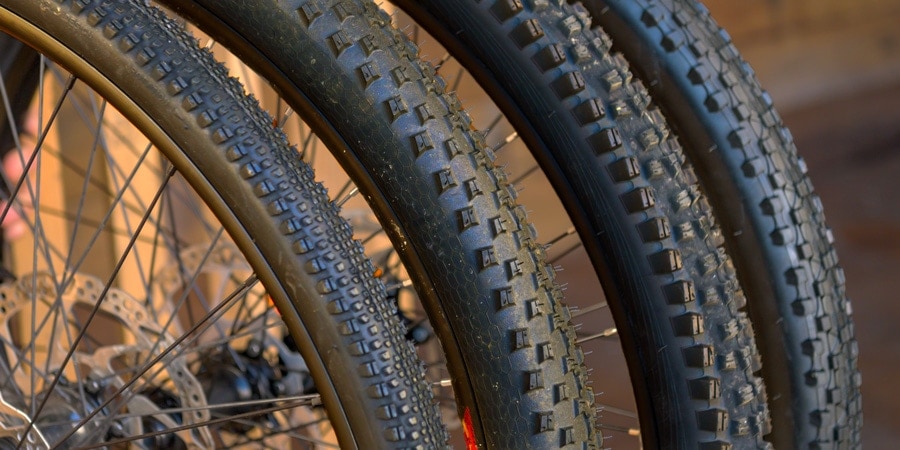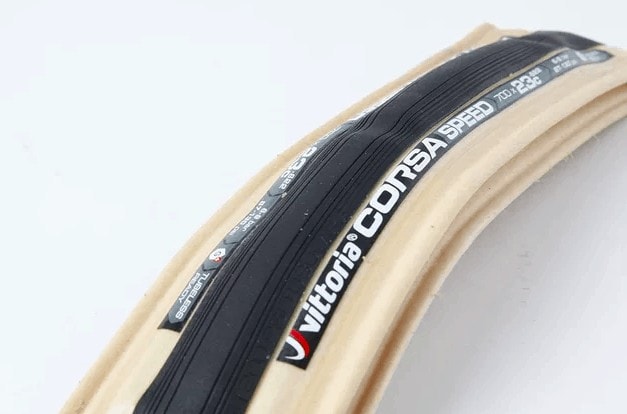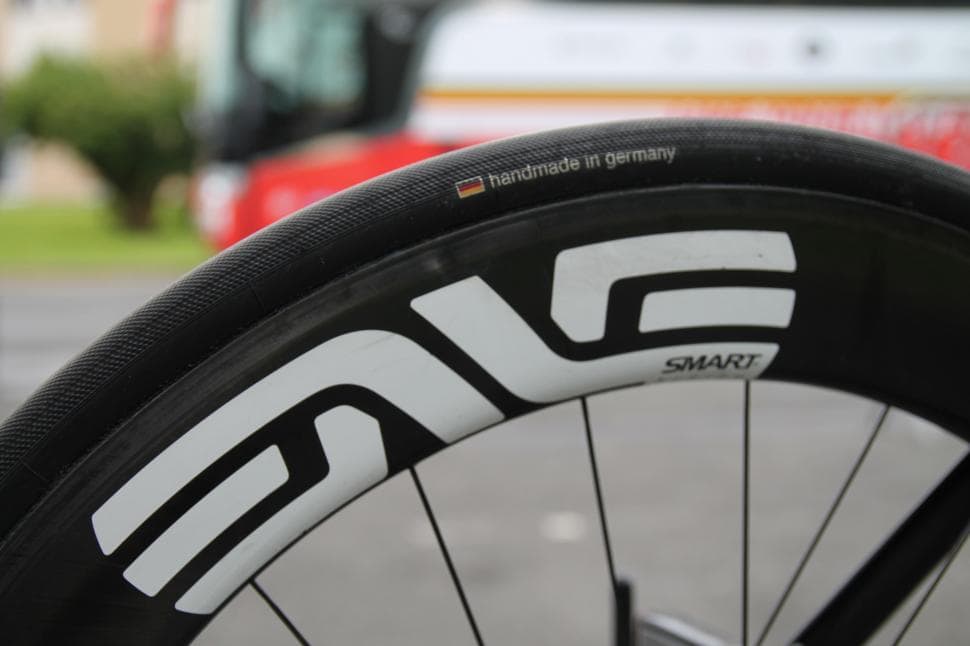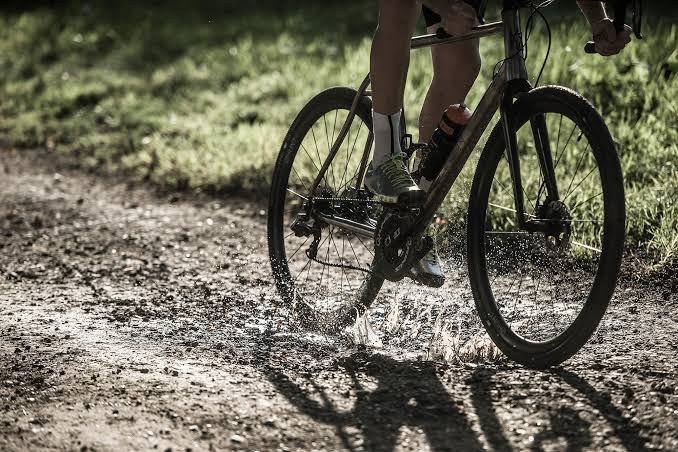9 Questions to Ask Before Building A Custom Wheelset
The best upgrade any cyclist can make to their bike to boost performance is purchase a high-quality wheelset. Going custom means you’ll have a set of wheels built for you to your specifications. It’s hard to top that.
But how do you proceed if you’re considering making the leap?
Where do you start?
There are many factors to mull over, such as the rim material, number of spokes, hubs, and tire width, among others.
To help with the process, I’ve made a list of nine questions you should ask before building a custom wheelset.
Let’s jump in.
What Type of Riding Is it For?
Probably the most important aspect to consider is what type of riding you plan on doing?
Lightweight racing wheels aren’t suited for gravel.
Or perhaps you’re planning on riding from coast to coast or the entire length of South America. You need the proper materials to accomplish your goals.
A lightweight wheel with 28 or fewer single-butted single-gauge radially laced spokes wouldn’t be the best choice for such a rigorous adventure.
You need a sturdier build to handle the distance and abuse. Who doesn’t want to keep mechanicals to a minimum? 32 or 36 double or triple butted spokes, laced double or triple cross would be more in order.
All-road wheels are an option, but I think you’d appreciate what custom wheels with a specific purpose can do for your performance. As someone who rides hand-built wheels, I’d bet you’d ever regret your purchase.
Reuse hubs from a crashed set and give them a new life in a custom build. No one said you had to start from scratch and you’ll save money too.
Carbon or Aluminum Rim?
Ah, the conundrum of choosing carbon or aluminum wheels.
Both materials have their positive and negative points, so other than strictly considering your budget, your decision may be based on your weight or plans for these snazzy new wheels.
Carbon is more expensive than alloy, but stiffer, which means they’re faster and flex less when climbing out of the saddle or pedaling through corners. It’s lighter than aluminum and can form a deeper wheel profile for improved aerodynamics with a minimal weight penalty. Carbon is durable, but if you crash, you crash.
Alloy has a more friendly price tag and can be as stiff as carbon, but it comes in heavier for the same amount of material. It’s less aesthetic too since the braking surface is typically bare if you’re running calipers. If discs are your thing, the rims can be in something other than silver.
Before you decide, define the type of brake you’ll be using. If you’ve got calipers, the aluminum braking surface dissipates heat better than carbon.
Rim braking on carbon rims is challenging in wet weather too. You’ll burn through your brake pads. If you’ve got discs, either material will suffice since any braking heat applies affects the disc and not the rim.
What Tire Width Do You Intend to Use?
Modern wheelsets are tubeless and have a wider rim to accept a wider tire. Skinny and high-pressure is a thing of the past. Gone are the days of 23mm high-pressure tires for speed.
Scientific testing proves that wider tires, run at lower pressures, are faster. Despite the trend, the clincher is still alive and well. It boils down to your preference.
Road and gravel riders are now opting for 28 to 30mm tires running at lower pressures for optimal speed, comfort, and rolling resistance. Logic may tell you otherwise, but the data don’t lie.
If you’re building wheels for a bike you currently own, verify the clearance of the front fork. Measure twice, build once.
What's the Estimated Maximum Weight?
A 52cm bike will handle less than a 56cm one because of the estimated size and power of its rider. Wheelsets are interchangeable between bicycles, so more attention should be given to rider vs maximum weight the wheel can handle.
Keep in mind that riders of different weights will have unique experiences on the same set of wheels.
Hubs include information on their recommended rider weight in the box. If in doubt, ask your builder. The number of spokes your wheel has also determines its max weight.
A 20 spoke wheel will support less of a load than one with 28 or 32 spokes. 18/20/24 are common spoke options for the front and 20/24/28/32 for the rear
Different lacing techniques add additional strength to the wheel. Radial is acceptable for rim brakes, while 2x and 3x methods are best adapted to disc wheels due to the increased speeds and braking forces they incur.
Your wheel-builder will know which hub, spoke and lacing pattern is best for your weight and riding conditions.
Is there Enough Tire Clearance on the Bike Frame?
While we touched lightly on this subject already, I prefer to reiterate the importance of knowing the clearance your bicycle will allow.
Clearance is the maximum space allocated between the front fork and frame to accept tires of different widths.
Rim brakes usually have a max clearance of 26mm, while disc brakes can accept 28 to 30mm+.
Modern road and gravel bicycles accept wider tires to run those faster, and more comfortable wide-rimmed, performance tubeless tires we mentioned earlier.
Wider tires shed debris better, mean improved traction, and the chance to run larger volumes at lower pressures. Cyclocross is another sport with wide clearance, possibly the ones who started it all!
Read More : Cyclocross vs Road Bikes – What are the Differences?
Rim or Disc Brakes?
If you’re recycling a favorite set of hubs from an old set of hoops, you’ll probably be going with a standard rim for caliper brakes. But what about disc brakes?
Some hubs accept both QR skewers and thru-axles (with adaptors). Newer road bikes come with disc brakes and thru-axles only.
The common standard is 12 X 100mm for the front and 12 x 142mm for the rear.
And the discs?
The brake discs attach to disc-specific hubs in one of two methods, via a centerlock (AFS) or a 6-bolt pattern.
Centerlock technology is more secure and convenient. 6-bolt discs are older tech and slowly becoming obsolete. Verify which one you need before ordering any brake discs for your disc hubs.
Read More : A Beginner’s Guide to Bicycle Disc Brakes
Are the Hubs Easily Serviceable?
Cool road hubs like Phil Wood’s used to come with a grease port and gun so you could lube up the bearings without cracking open the hub.
Hub technology has changed over the years thanks to improved manufacturing and ball-bearing techniques and tolerances. Quality hubs are so good, there is little maintenance to do (if any) and they often come with a lifetime guarantee.
If you insist on opening your hubs, detailed breakdown and service instructions should come in the box. The most any rider should need to do is keep them reasonably clean, grease the skewers or thru-axles, and possibly replace the sealed bearing cartridges.
If your hubs came with stainless bearings, you can upgrade them to ceramic. This may be an option at time of purchase, which would save you money, time and hassle later.
In some circumstances, the freehub may have to be changed or serviced. Springs and pawls get worn and need to be replaced from time to time. Different brands may require special tools, so if you’re investing in the hubs, get yourself the tools you need if you prefer to do your own work.
As for spokes, most custom wheel builders usually offer free spoke replacements for the lifetime of the set.
What's the Final Weight?
Lightweight is a subjective word these days. What used to be light for some may be heavy by today’s standards.
Many factors go into a wheel’s final weight, the hub, spoke type, number of spokes, rim material, and if it’s a disc or rim brake set up. Don’t forget the discs, any skewers or thru-axles, plus the tire and inner tubes.
Some total wheelset weights don’t include these last three elements, so read the fine print.
Today, any set that is 1,400g or under is considered lightweight.
An average wheelset weight is somewhere between 1,600g and 1,400g, and anything over 1,600g+ is described as heavy. Both carbon and aluminum rims can achieve these weight groups.
How Much Will it Cost Me?
Here we are, down to the bottom line, how much will a custom wheelset cost?
The answer isn’t cut and dried.
If you’re experienced or curious enough to build your own, you’ll save a bundle on manual labor. Wheel building is an art, so if you’re just starting out, I’d test-drive your skills on a few hoops you already own before jumping into the deep end with expensive goodies.
The final price varies a lot and depends on your choice of hubs, spokes, rim material, and builder/brand. Labor costs can be per hour or per set.
Custom, hand-built wheels are an investment, but one that you won’t regret. It’s the one item you can add to any bike that’ll improve its performance and feel.




